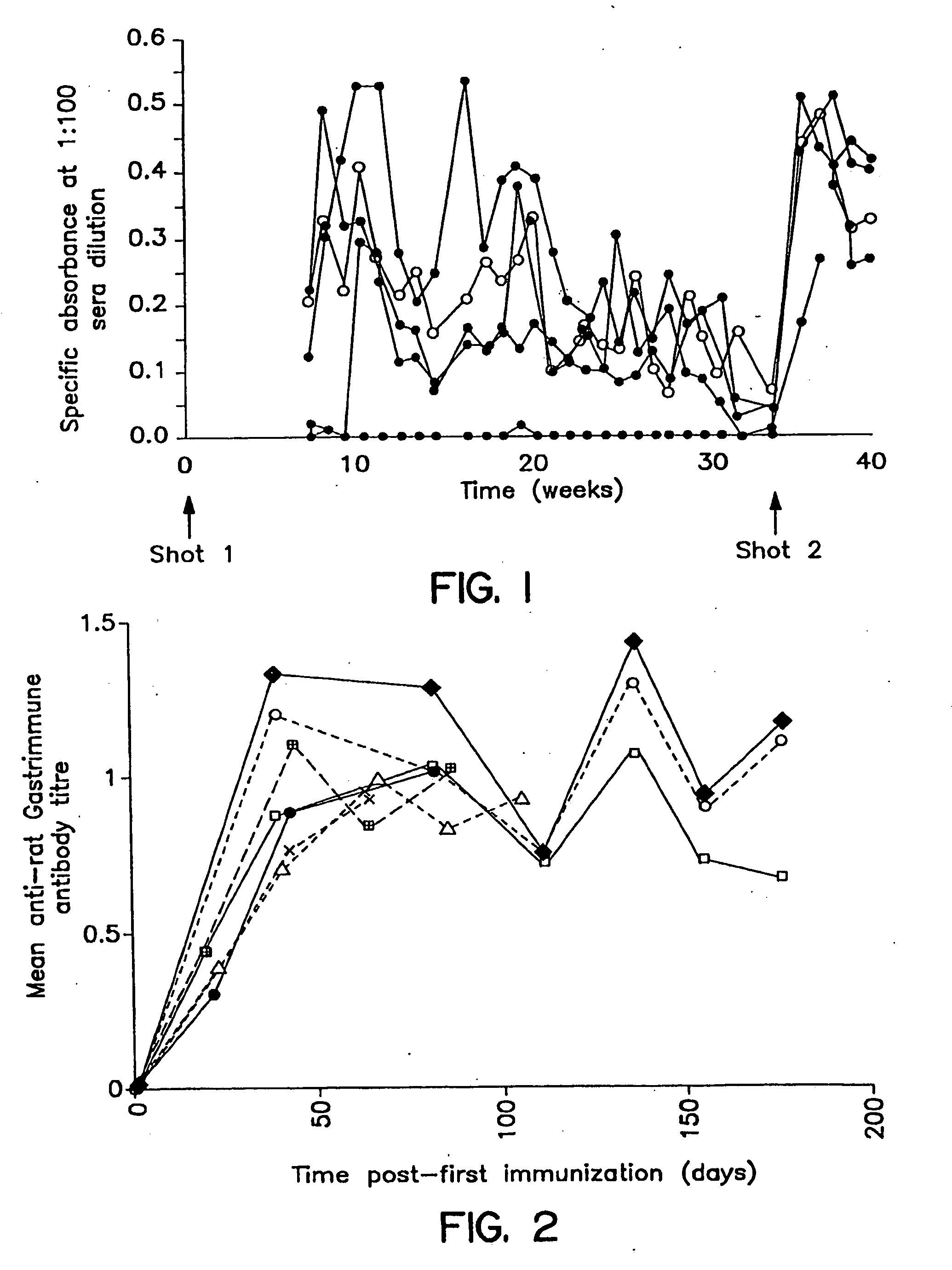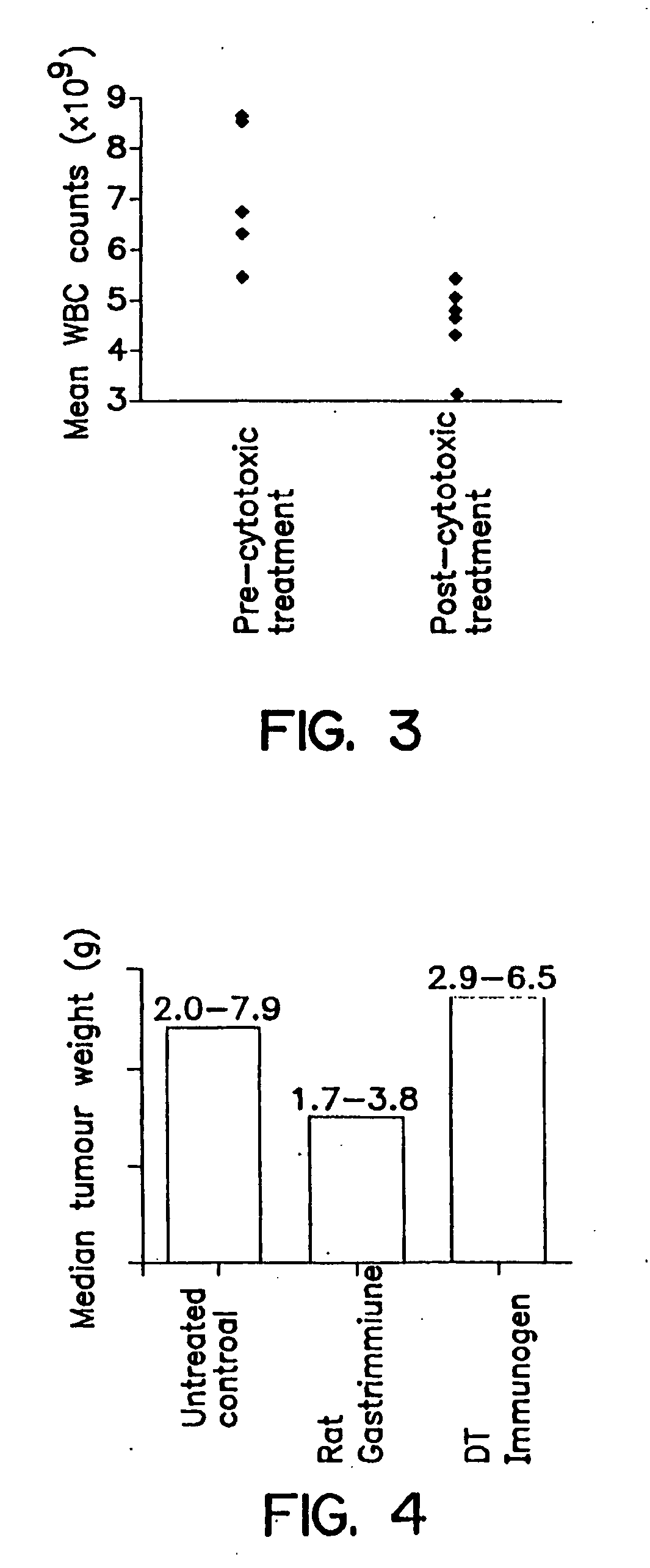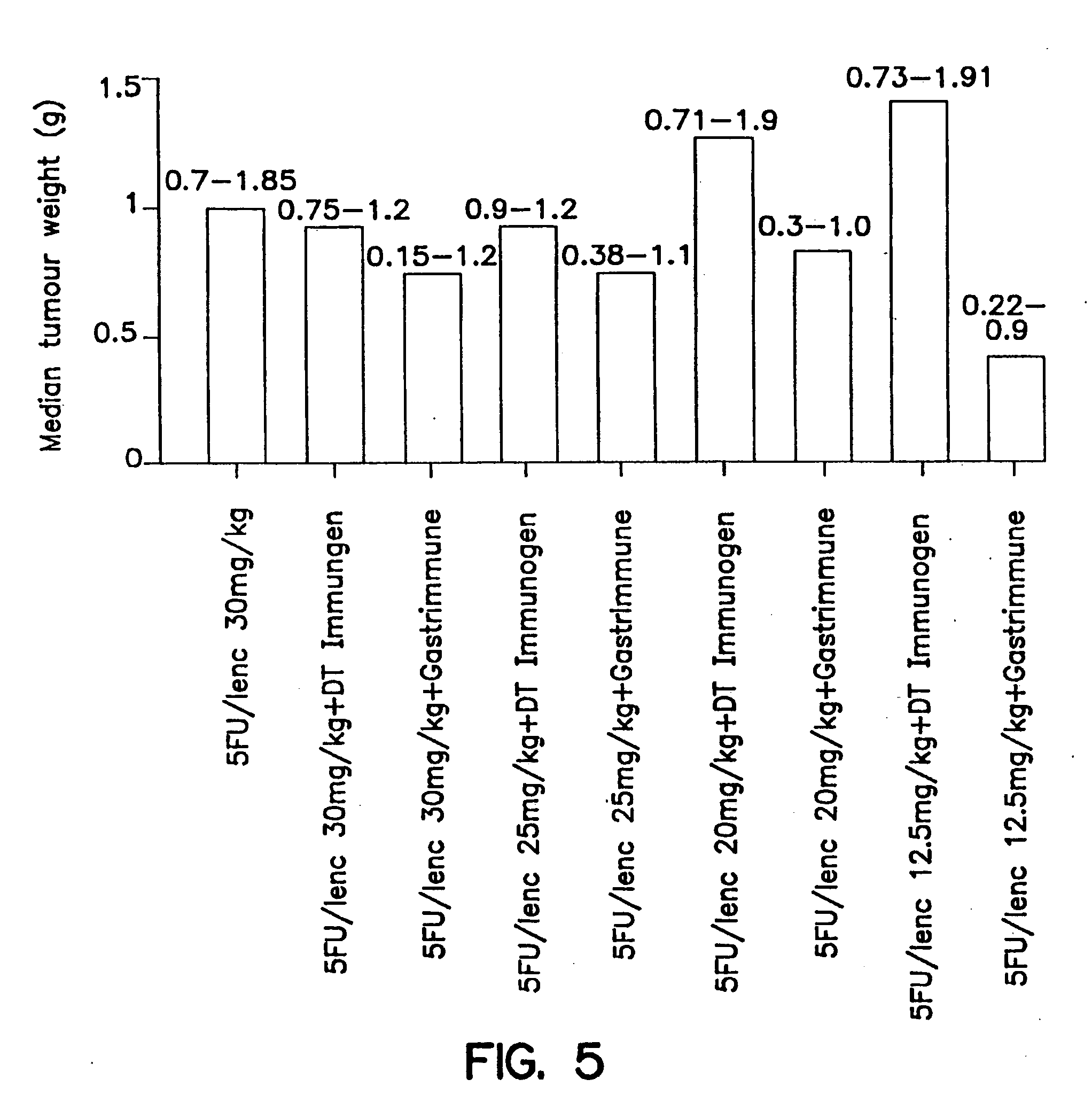Combination therapy for the treatment of tumors
a tumor and combination therapy technology, applied in the field of tumor therapy, can solve the problems of ineffective residual occult disease, inability to treat residual tumors, and abnormal production and secretion of different molecular forms of hormones, so as to improve the efficacy of colorectal cancer treatment, reduce the toxic effect of chemotherapeutic agents, and reduce the amount of chemotherapeutic agents
- Summary
- Abstract
- Description
- Claims
- Application Information
AI Technical Summary
Benefits of technology
Problems solved by technology
Method used
Image
Examples
example 1
[0039]The following experiments were conducted to determine the potential clinical benefit offered by anti-G17(1-9)-DT. The aims of this study were as follows:
[0040](a) to determine the long term effect of specific rat anti-G17(1-9)-DT immunization on the histological appearance of the rat GI tract.
[0041](b) to evaluate the effect of 5-FU / Leucovorin combinations on antibody titers raised by anti-G17(1-9)-DT; and
[0042](c) to determine the therapeutic effect of anti-G17(1-9)-DT and 5-FU / leucovorin combinations on a rat colon model.
[0043]Cell Line
[0044]DHDK12 is a rat colonic epithelial tumor cell line (Martin, 1983). The cell line was maintained in RPMI 1640 growth medium (Gibco, Paisley, Scotland) containing 10% fetal calf serum (FCS, Sigma, Poole, UK) in humidified conditions at 37° C. and 5% CO2.
[0045]Immunogen
[0046]The anti-G17(1-9)-DT immunogen consists of amino acid residues 1-9 of G17 linked via the carboxy-terminus to the peptide spacer SSPPPPC (SEQ ID NO: 2 in the Sequence Li...
example 2
Histological Analysis of the Long Term Anti-G17(1-9)-DT-immunized Rats
[0058]Specimens from the stomach, colon and rectum were evaluated histologically following hematoxylin and eosin staining as described in EXAMPLE 1. These were compared to specimens from age and sex-matched control rats. All areas of the GI tract evaluated were identical in both anti-G17(1-9)-DT-treated and age-matched control rats with respect to length of villae / crypts / mucosal height. In the stomach, enterochromaffin-like (ECL) cells were similar in number and appearance in the two subject animal groups. However, there was some evidence of granulation of the G cells in the anti-G 17(1-9)-DT-treated rat stomach mucosa.
example 3
Crypt Cell Proliferation Rate (CCPR) of Colonic Epithelium from Long Term Anti-G17(1-9)-DT-Immunized Rats
[0059]The CCPR of colonic epithelium and anti-rat G17-antibody titers were analyzed as described above. Table I shows the results obtained from 4 of 5 rats evaluated comparing CCPR to anti-rat G17 antibody titers. The mean CCPR for control rats was 18.93 (standard deviation 3.2) and for the anti-G17(1-9)-DT-immunized rats 23.7 (standard deviation 7.9). There was no statistical difference in CCPR between the anti-G17(1-9)-DT-immunized and age-matched control rats. These results indicate that the rate of crypt cell division in a colonic epithelium is the same for control and anti-G17(1-9) DT-immunized rats.
TABLE IA comparison of anti-rat G17:DT antibody titerswith the crypt cell proliferation of the colonSpecific absorbanceCrypt cell proliferationrelating to anti-ratrate (mean metaphases / cryptG17:DT antibodiesafter 2 hours vincristineRat(1:1000 dilution)treatment)Control 1021.9Cont...
PUM
| Property | Measurement | Unit |
|---|---|---|
| humidity | aaaaa | aaaaa |
| concentration | aaaaa | aaaaa |
| concentration | aaaaa | aaaaa |
Abstract
Description
Claims
Application Information
 Login to View More
Login to View More - R&D
- Intellectual Property
- Life Sciences
- Materials
- Tech Scout
- Unparalleled Data Quality
- Higher Quality Content
- 60% Fewer Hallucinations
Browse by: Latest US Patents, China's latest patents, Technical Efficacy Thesaurus, Application Domain, Technology Topic, Popular Technical Reports.
© 2025 PatSnap. All rights reserved.Legal|Privacy policy|Modern Slavery Act Transparency Statement|Sitemap|About US| Contact US: help@patsnap.com



